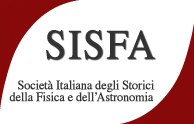Speaker
Description
From the early time humans have always expressed the desire to explain the origin of cosmos through narrations. The representations of this desire were also tangible signs of the connection with the universe. They brought awareness of a world beyond their reach and often functioned as scientific observation tools and as three-dimensional calendars.
In the mid-20th century there was a change in cosmological understanding that arose from the dissemination of ideas from new physics developed in the first half of the century. Artists who wished to represent the newly understood nature suggested by these ideas had to find new ways of doing so and, among visual artists, abstracted forms of representation were one outcome.
The aim of this talk is to show how physics, the scientific concepts of the 20th century have influenced not only culture, but also contemporary art. It also wants to show how contemporary art has tried to represent the birth of the universe. In particular, we will focus on the analysis of Grosse fatigue (2013) by the artist Camille Henrot, a work in which different languages and disciplines are intertwined: comparative mythology, physics, anthropology, etc. All this also allows us to have an interesting suggestion on an effective communication of scientific concepts in the new millennium.
Bibliography
Bertol D., Framing the land and sky: art meets cosmology in a sustainable environment, «Leonardo», vol. 39, n. 2, Cambridge, MIT Press, 2006.
De Paoli M., L’infinito. Il vuoto, Bari, Schena editore, 1988.
De Rosa M., Fowler. C., Creating Entangled Histories of Museum Collections, Milano, Mimesis, 2019.
De Santillana G., von Dechend H., Hamlet’s mill, Boston, Gambit, 1969.
Novello M., Qualcosa anziché il nulla. La rivoluzione del pensiero cosmologico, Torino, Einaudi, 2011.
Rycroft S., Art and micro-cosmos: kinetic art and mid-20th century cosmology, «cultural geographies» vol.19, n. 4, 2012.

